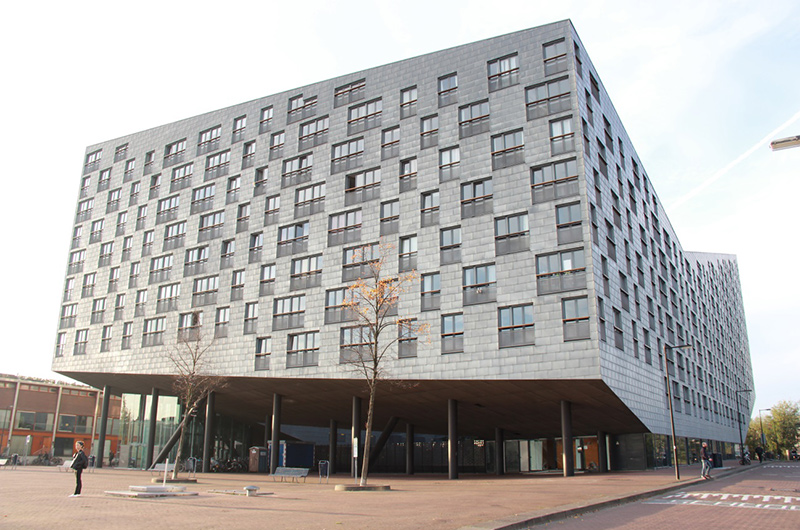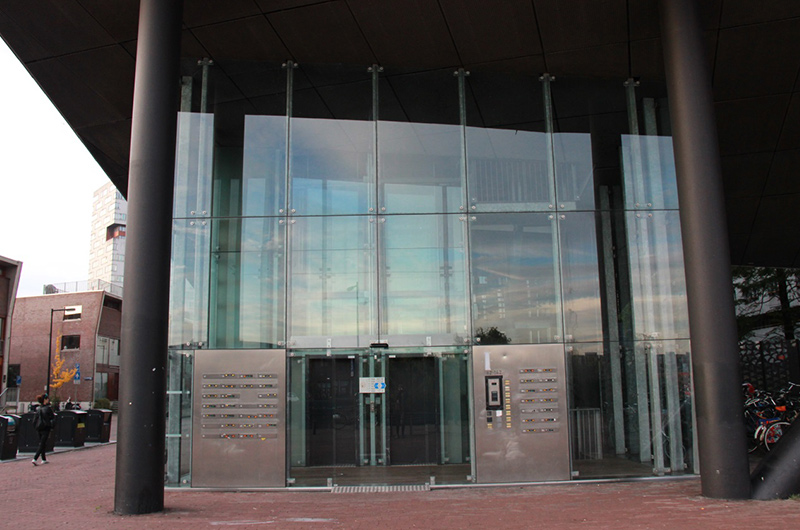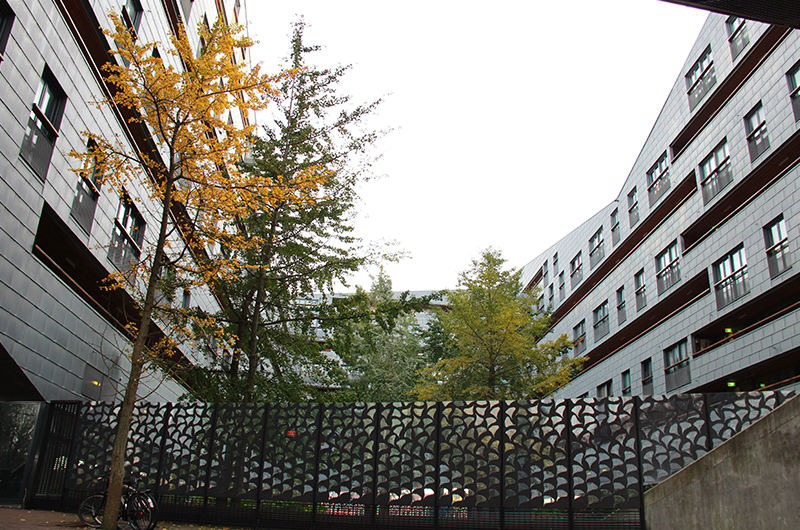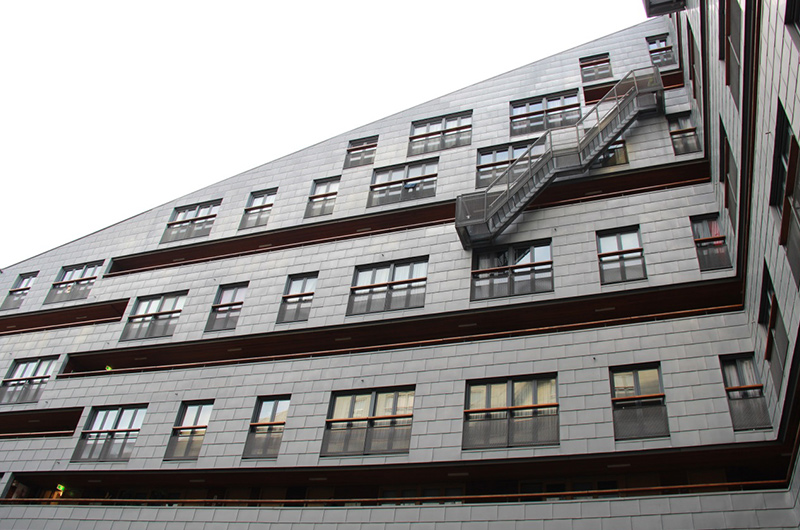An architectural review of the dramatic building, The Whale, Borneo-Sporenburg, Amsterdam
The Whale
Three meteorites fell in the city, in a recently requalified neighbourhood of Amsterdam, Borneo-Sporenburg. These so called meteorites are in fact three massive buildings placed diagonally to disrupt a grid of low-rise units and to provide the programmed density to this area.
One of them is The Whale. Designed by Architekten Cie., this volume has a visual impact; not only due to its big proportions but also due to its shape, materiality and configuration. The program is divided into three main sectors: 194 apartments in the volume itself, 1100m2 of shop and office spaces in the glazed ground floor, and an underground parking garage with 179 spots. The massive block perched on top of the glazed base defies gravity, only a few
columns seem to support the heavy weight in one of the sides.
The façade is a mixture between small grey zinc tiles and a sea of windows disposed in a check pattern. The windows’ sizes seem to be chosen randomly, but in fact they’re arranged accordingly with the inner configurations of each apartment, varying in width; between 1 to 4 vertical windows are placed together. These windows are protected with a wood railing and a perforated metallic panel creating a false balcony.

Exterior window and false balconies, The Whale, Amsterdam, Oct 2015. © Photo by Ana Lopes Ramos
The entrance
An indented glazed box at the southeast side allows the dweller to access the apartments. This box aims to be “invisible”, to not disrupt the shape and concept of the big floating building. With a tight budget to follow, the faces couldn’t be made out of a single glass piece, instead the architects designed a metallic structure placed in the interior and screwed from the outside to hold a 3 x 7 glass grid. In it, a lift and a set of stairs make the trick to access the upper floors.

Budget glazing arrangement to entrance, The Whale, Amsterdam, Oct 2015. © Photo by Ana Lopes Ramos
Bringing in the light
Being it such a compact building, one of the main challenges was to provide sunlight to the inhabitants. The solution passed by lifting up the northwest and southeast sides of the volume, providing the lower floors with light from underneath the building. This lift also translates into an inner void where a semi-private green inner quarter offers not only light, but also nature contact to its inhabitants. Like a cloister, this space is an opportunity to establish relations, to give a domestic and friendly environment between neighbours.

The inner “cloister”, The Whale, Amsterdam, Oct 2015. © Photo by Ana Lopes Ramos
Although developed in the same material, with the same window/balcony principle as the exterior facades, the cloister has a slightly different design; horizontal rips draw exterior covered corridors that work as its balconies, establishing communication between apartments. Metal stairs are “glued” in the cloister, allowing access between floors.

Exterior stairs to fascia, The Whale, Amsterdam, Oct 2015. © Photo by Ana Lopes Ramos
The car park
Underneath, a slanted concrete box swallows the cars in the underground parking. Since it’s set back from the façade, this element doesn’t interfere with the overall concept of the building. It supports the Borneo-Sporenburg ideology of having as few cars as possible on the streets, encouraging the inhabitants to use public transportations or, even better, their bicycles. This is only possible due to the main building twist towards the sky which solves not only the access to the parking garage but also the main entrance to the building.
The edges of the Whale draws cuts in the sky, providing new shapes whenever the building is contoured. The sun light interacts with the metallic cladding; it reflects and brings a different understanding of the relation between elements. It’s a liveable sculpture; not only enclosing a high density of dwellings, but also shaping the urban space, the urban life, it provokes, it promotes discussion and communication. It’s an unexpected block in a sea of low-rise houses; it stimulates, excites and surprises the pedestrian crossing its path. It integrates different activities in itself; it boosts the city and relations. More than a building it’s an urban experience.